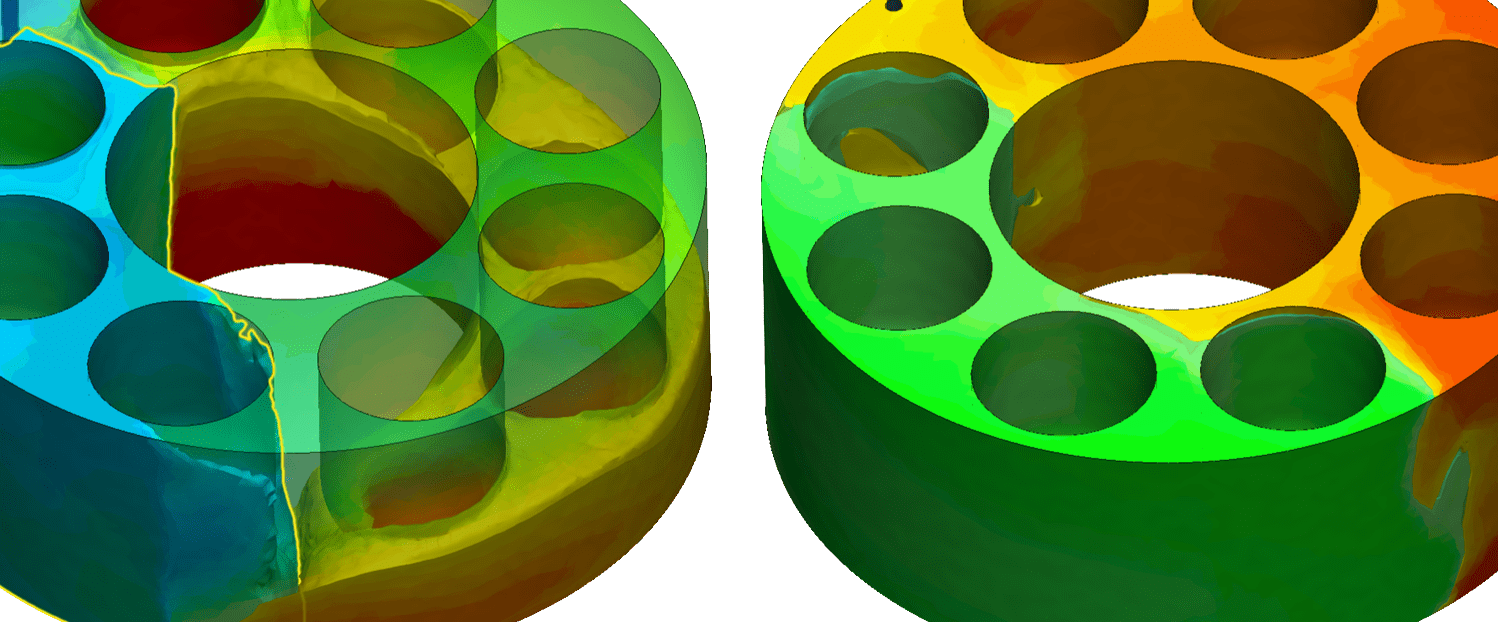
The SOTAX Group is a leader in providing automated dissolution testing systems, sample prep workstations for content uniformity and assay testing, as well as tablet testing instruments for the pharmaceutical, medical device, biopharmaceutical, and dietary supplement industries.
During the dissolution process, SOTAX’s testing system “At Xtend” must keep the ambient temperature of the vessels within the system constant. For this, they use a temperature-controlled circulating water bath. The inlet and outlet of the circulating water were constructed in a way that the fluid could flow as evenly as possible through the vessels.
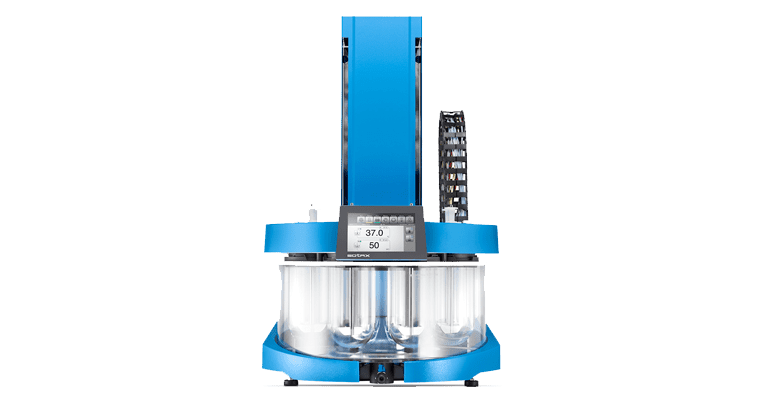
SOTAX sought to shorten testing cycles by simulating realistic conditions through correctly-assumed parameters in a time-efficient way.
Sotax needed their simulation results to be very similar to real-life results. As a first step, the experimental results need to be replicated in simulations to then confidently go for design changes and mitigate the issues that reduce the efficiency of circulating the waterbath. For example, the flow swirl or vortices they could discern in the prototyped water bath needed to also be visible in the simulation. In addition to results, SOTAX needed an online simulation platform that was affordable and provided support to their team.
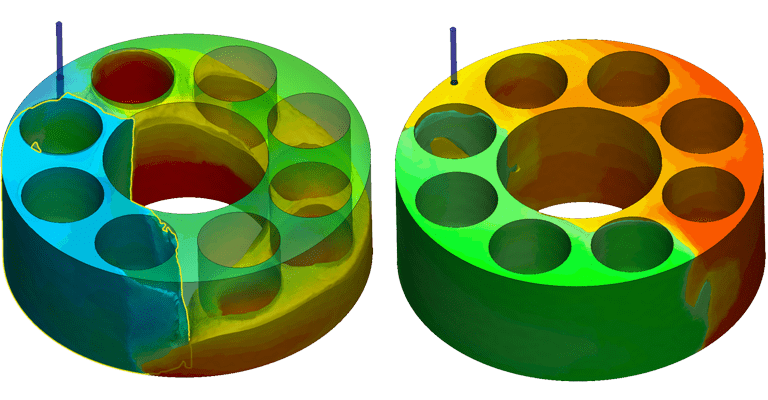
Using SimScale, SOTAX was able to compare different construction studies through incompressible flow and heat transfer simulations. They used the new mesh preview, which was much faster and saved core hours for their application. Because water from the bath is separated into two streams then merged together into a drain, SOTAX used passive scalers to measure the separate flow rates. At first, it was difficult for the team to familiarize themselves with the passive scalars and transient simulation method, but through SimScale’s tutorials and the live chat support feature, this problem was quickly overcome.
SimScale answered questions about the passive scalars directly in the chat and we felt confident in getting accurate results.

Stefan Kunstmann
Development Engineer
SOTAX chose 8 cores, with the running time of a steady-state simulation at about 18 minutes and 2.4 core hours.
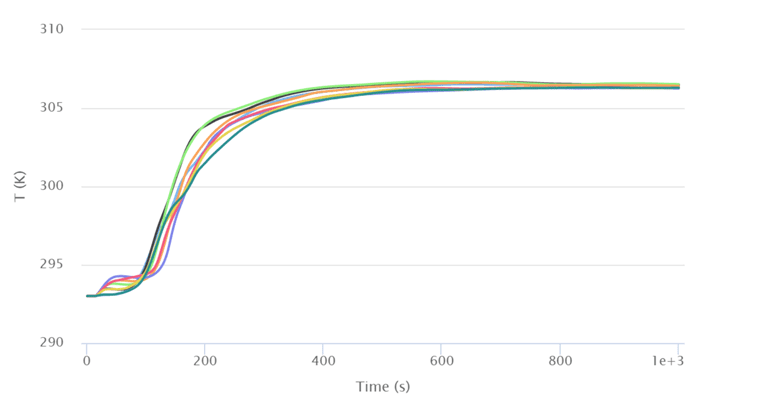
SOTAX was able to verify the construction of the inlet and outlet openings of their design and got accurate results of the temperature distribution of the vessels. Together with the temperature control, they found that their design could keep the vessels optimally warm.
In order to meet increasing market requirements and sustain a competitive edge, SOTAX is developing a new generation of resolution devices that are not only technically sophisticated and intuitive, but also use the best possible methods during the development phase in order to reach goals efficiently. SOTAX will continue to use SimScale to simulate both fragments of devices, then the complete construction before the production of a prototype.
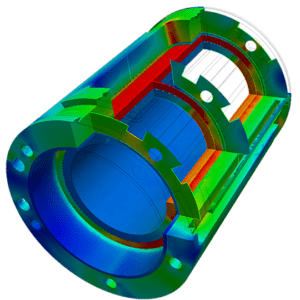

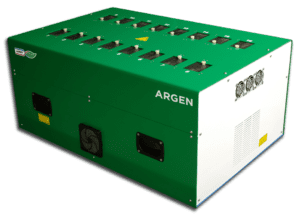

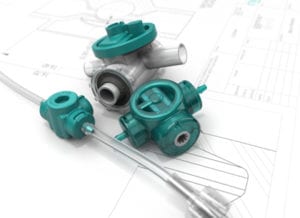

When I started with SimScale, I knew from my previous experience how simulations are structured and work, but I had forgotten some details over the years. The great tutorials, documentation, and personal conversations with support have brought me up to date within 2 months of using SimScale. I am now well versed and use SimScale even with smaller problems to confirm my pre-calculations and to quickly compare design studies.

Stefan Kunstmann
Development Engineer
Sign up for SimScale
and start simulating now